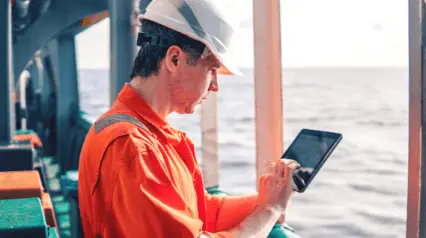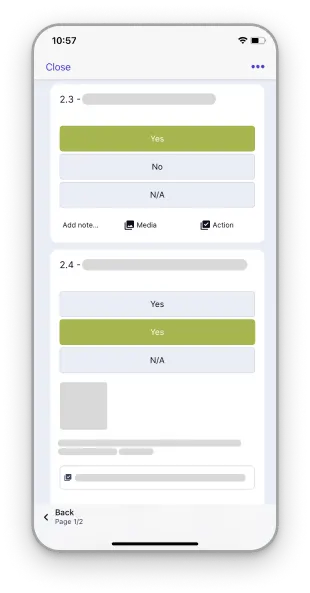What is the Port State Control Inspection?
The Port State Control (PSC) Inspection is the regulatory procedure that verifies if ships in foreign ports comply with international maritime conventions such as the Safety of Life at Sea (SOLAS), Prevention of Pollution from Ships (MARPOL), and Standards of Training, Certification, and Watchkeeping for Seafarers (STCW).
Why are PSC Inspections Important?
The International Maritime Organization (IMO) standardized PSC Inspections for the safety and security of shipping and the prevention of marine and atmospheric pollution by ships. Port State Control Officers can detain substandard ships, regardless of their scheduled departure time. Unrectified deficiencies can result in paying avoidable fees, delaying shipping operations, and losing loyal and potential customers.
What is a Port State Control Inspection Checklist?
A port state control inspection checklist is used by the Captain (or Master) and officers on board to easily identify deficiencies, implement corrective actions, and demonstrate the compliant condition, operation, and manning of the ship.
Top 3 PSC Inspection Detainable Deficiencies
Each of the nine regional Memorandum of Understanding (MoU) websites displays inspection results deficiencies, monthly detention lists, and blacklisted ships of current member States. Over a three-year rolling period, annual reports on Port State Control indicate the following as the top 3 detainable deficiencies:
1. International Safety Management (ISM)
ISM-related deficiencies in the maintenance of the ship and equipment, emergency preparedness, and communication systems inevitably lead to detention. Every year, Port State Control Officers perform Concentrated Inspection Campaigns (CICs) where high levels of deficiencies have been identified. Use a PSC Checklist for Emergency Systems and Procedures to adequately prepare for the 2019 CIC from September to November.
2. Fire Safety
Last July 1, an explosion from a fire that broke out in the Italian-flagged Synzania killed a crew member and injured 15 others. The Captain and officers on board should rectify deficiencies in fire doors/openings in fire-resisting divisions, fire detection and alarm systems, and fire-fighting equipment and appliances to reinforce fire safety and avoid similar incidents.
3. Certificate and Documentation
One of the most prevalent PSC inspection deficiencies is due to non-professionalism and negligence e.g., the Oil Record Book (ORB) is not on board or properly filled out. Keep an eye out for these commonly misplaced, invalid, or unavailable certificates and documents by category:
- Crew Certificates – Seafarer’s Employment Agreement (SEA), endorsement by the flag State, Minimum Safe Manning Document
- Documents – Records of seafarer’s daily hours of work or rest, Garbage Record Book, cargo information
- Ship Certificates – Continuous Synopsis Record (CSR), Safety Management Certificate (SMC), International Ship Security Certificate (ISSC)
FAQs About Port State Control Inspection
Low-risk ships should be inspected at least once every three years, standard-risk ships should be inspected at least once a year, and high-risk ships should be inspected every six months. The port state control inspection’s frequency heavily depends on the type of ship to be assessed.
Clear grounds are evidence found by Port State Control Officers where a function, equipment, or area of a ship isn’t at par with the standards. The existence of clear grounds warrants further inspections to ensure that a ship is safe and secure in each use.
According to the Paris Memorandum of Understanding (MoU) on Port State Control, the four main types of port state control inspections are—initial inspection, more detailed inspection, expanded inspection, and concentrated inspection campaign. More details on them below:
- Initial inspection – aims to check the certificates and documents of the ship, as well as inspect common areas and the general condition of the ship.
- More detailed inspection – this type of inspection is conducted when there are clear grounds discovered in any component of the ship (i.e equipment, crew,) that hinders it from performing as it should.
- Expanded inspection – this type of inspection is normally performed in high-risk ships. It focuses on the overall condition of the ship while also taking into account the human element in each specific operation.
- Concentrated inspection campaign – designed to review specific areas or ship functions where high deficiency or error was found.



